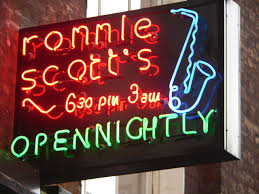Blues is just a bad guy feeling good.
Over 50 years ago (gulp), I worked on a newspaper alongside the guy playing the blues in the pale blue link above.
We were teenagers at the time, both deeply into old-school American blues, as well as the new-style British R&B and blues-rock bands coming through in the 1960s. That’s his own composition he’s playing: ‘Blues is Just a Bad Guy Feeling Good’.
His name is John Phillpott. It’s a surname, like mine, that could be at home in a Shakespearean play – which is fitting since, like the Bard of Avon, we both were Warwickshire lads. And, like the Bard, we both have goatee beards and write stuff. That’s where the resemblance ends, of course. But, then, William Shakespeare couldn’t play a guitar or blow a blues harmonica like John Phillpott. You’ll see what I mean down the page a bit
John and I were young reporters on Warwickshire’s Rugby Advertiser in the English Midlands, working under a hard-bitten bully of a boozy chief reporter, who made our lives hell. Despite that, it was a fabulous era to have press cards, which gave us access to visiting artists like the Kinks, John Lee Hooker, Pink Floyd and Peter Green. Indeed, the title of John’s song above came from a quote by John Lee Hooker himself when John Phillpott asked Joe Lee Hooker how he would define blues. “Blues is just a bad guy feeling good,” said John Lee.
John has written about those far-off days in his brilliant book, ‘Go and Make the Tea, Boy’, below . It’s selling like crazy on Amazon and has already gained 17 five-star reviews.

John wrote about the local music scene on the Advertiser’s back page, and when he moved on to bigger and better things, I took his place. In an era that spawned British blues and blues-rock, Rugby was a hotbed of blues bands and blues-rock. We witnessed John Lee Hooker’s driving boogie guitar live at Rugby’s town hall and Gene Vincent and the Rolling Stones (twice), at Rugby’s cinema.
Indeed, Brian Jones’ blues harmonica playing in Rugby so inspired young Phillpott, he took up the instrument himself. How well he “mastered the black art of the Devil’s music”, as he writes in his book, is apparent in the video below.
The session above took place in the deep south a few years ago, the deep south of France. John just walked up to the guy playing the piano and joined in with his harmonica. The poor old piano player must have wondered what had hit him.
Since we went our seperate ways in 1968, John and I continued to champion the blues, without the other knowing it. Between us, we’ve chalked up about 110 years devoted to the cause and recently reconnected through Facebook. John never gave up his day job, though, enjoying a long and successful career in English journalism. Yet he still managed to play the blues and R&B in various bands, including one with Steve Walwyn, another local Warwickshire lad, who later joined the fabulous English R&B band, Dr. Feelgood, on lead guitar.
With Covid preventing John Phillpott performing around Robert Plant’s Worcestershire, it at least gave him time to produce his golden nugget of a memoir. Here’s the review I gave it on Amazon.
“If you lived through the Swinging 1960s, how could you not love ‘Go And Make The Tea, Boy!’ If you were born afterwards, read it anyway, and see what fun you missed. Crisply written and tightly edited, ‘Go And Make The Tea, Boy!’ hurtles along at a cracking pace. Enjoy the highs and lows of a 16-year-old reporter on an English provincial newspaper in the 1960s,
“The reprobates, drunks, drunks and other paid-up members of life’s Awkward Squad all splash across the pages in glorious technicolour,” promises the back cover. So, too, do the cream of England’s rock bands. This was, after all, the decade that spawned the British (rock) Invasion of America and the world and John Phillpott was right in the middle of it.
By the last pages, you feel you’ve journeyed through what was probably England’s most exciting decade since the Roaring 20s, the 1960s. Highly recommended.”






